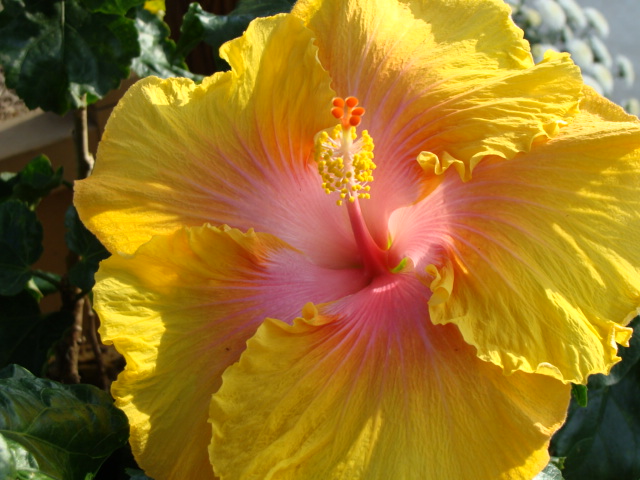Blog, FAQ, Garden Tips
Patio to Home
PATIO TO HOME
Some of those patio plants that cannot survive the winters outside can easily be brought indoors and kept as a houseplant or stored in a cool room until next spring. This is a great way to save money and start your growing season with a more substantial plant next year. Different plants have different winter care requirements regarding light and temperature.
Below is a list of some popular plants and their winter preferences.
COOL & BRIGHT
This group of plants prefers cool temperatures (45 -55˚F) and bright light from an East, West, or South facing window. The brighter the better for most plants during the winter months when the sun is low and less intense. Monitor daytime temps, you may need to open a window in order to maintain the cool temperature. The goal is to create a state of dormancy, if the temperature is too warm the plant will begin to grow.
Abutilon Duranta
Agapanthus Euphorbia Mandevilla
Angelonia Fuchsia Oregano
Bouvardia Gardenia Osteospermum
Carex Heliotrope Oxalis
Citrus Hibiscus Passion flower
Cordyline Ipomoea Geranium
Cuphea Jasmine Rosemary
Datura Juncus Salvia
Dichondra Lavender Santolina
SUNNY & WARM
This group of plants prefers warm temperatures (60 -70˚F) and bright light from an East, West, or South facing window. The brighter the better for most plants during the winter months when the sun is low and less intense.
Bougainvillea
Begonia Impatiens Strobilanthus(Persian Shield)
Colocasia Lantana
Coleus Musa (Banana) Thunbergia
Hibiscus Pentas Tibochina
It is best to slowly acclimate your plants to their new environment. Start by bringing them inside evenings. They will perform better if they have time to adjust to the new light and temperature levels.
Always clean your plants before bringing them inside, we recommend using Neem Oil. Prune lightly if needed.
The #1 cause of plant failure is OVER watering. These plants are resting for the winter and do NOT need a lot of water. Make sure the soil dries between each watering. Increase humidity by misting or creating a dry well with pebbles or installing a humidifier. Also an occasional shower will refresh your plants and clean their leaves of dust and debris.
Give your plants a rest from fertilizer. You can begin to fertilize again in late February or early March.
There are many other types of plants that may not be listed but will also do well indoors. Look you plant up online or check with a Wentworth Greenhouse employee.
Plants are amazingly adaptable and may work in a condition that has not been recommended. Don’t be afraid to experiment. Watch you plants for signs of stress and adjust the conditions accordingly.
TOO WARM/ NOT ENOUGH LIGHT
-Spindly growth
-Pale foliage
TOO COOL
-Loss of leaves
-Pale & Wilted leaves
If you are short on space try taking cuttings or let your plant go completely dormant by storing in a cool and dark location. The plant will lose all its leaves and may need a very light watering on occasion. Some plants that have been known to successfully overwinter in this fashion include brugmansia, salvia, passion flower, and pennisetum rubrum. This may not work for all plants so please do your research first or risk losing the plant.
The last tip is to check weekly for plant pests, especially on your warm climate plants. Cool temps and nice showers will help keep pests at bay. Signs of pests include sticky leaves or stems or speckled coloration on foliage. If you are unsure what ails your plant you can always bring a leaf sample to the greenhouses and one of our friendly staff will help identify the problem.

